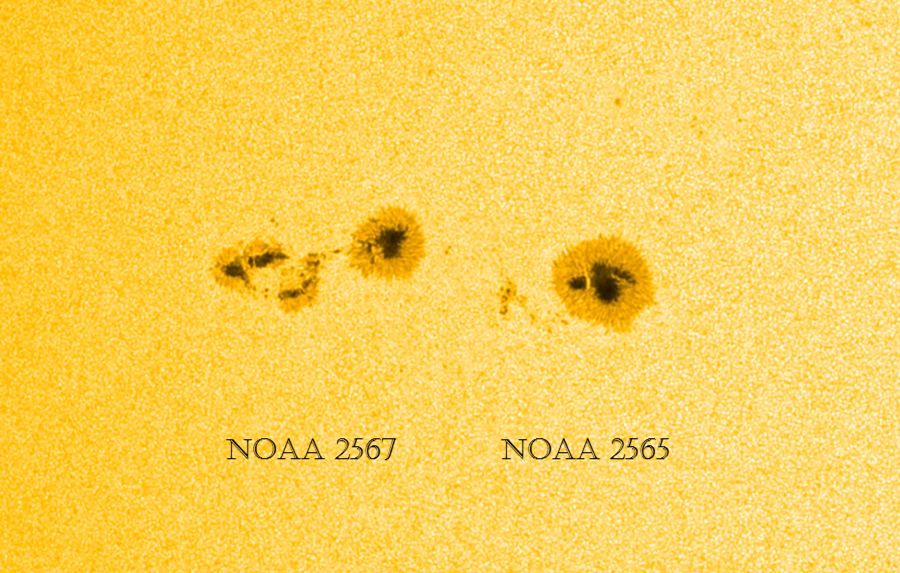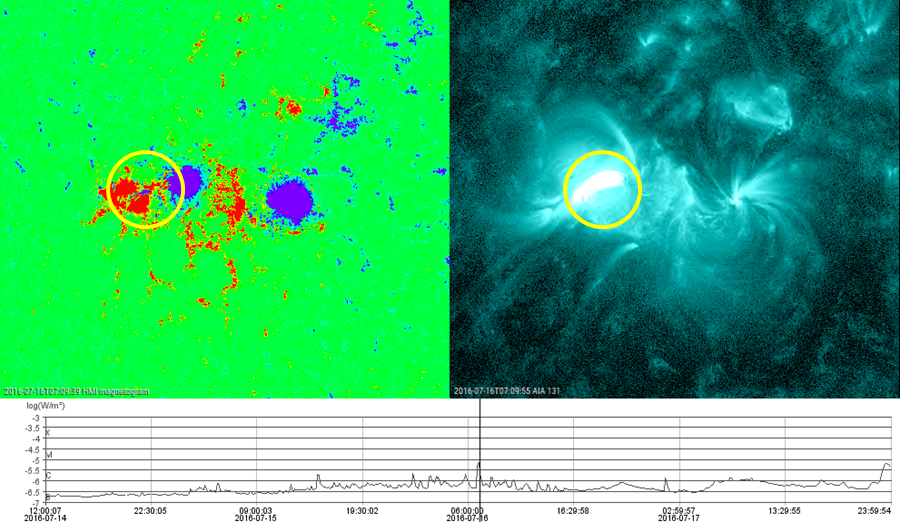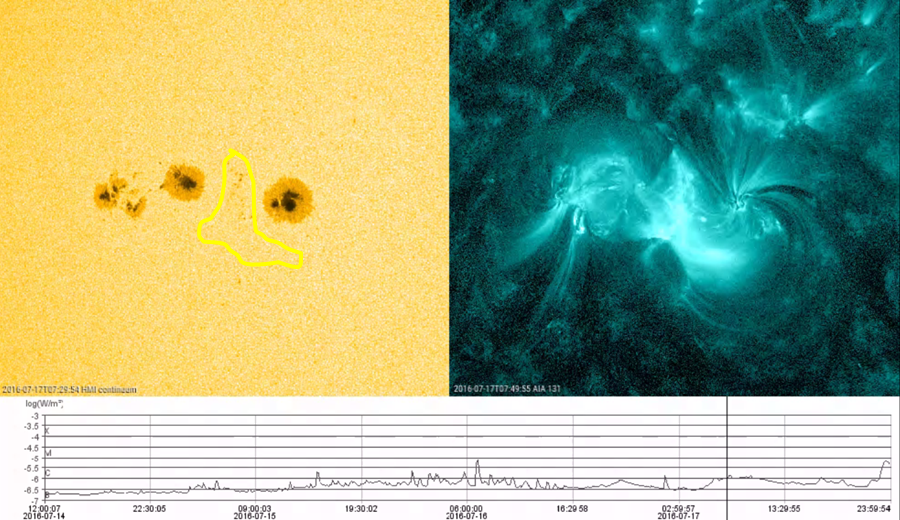Forecasters seemed to be heading for yet another boring spaceweather week, when -during the afternoon hours of 14 July- a new sunspot region gradually developed about 70.000 km east of NOAA 2565's main spot. In solar terms, that's like shaking hands with your neighbours! The new "sunspot family" was numbered NOAA 2567, and both groups reached a surface area of nearly twice the surface area of the Earth by the end of the period.

As the new group further matured, it developed a small delta in its trailing portion. This can be seen in the magnetogram underneath, where a negative (inward magnetic field; "blue") island is surrounded by positive (outward magnetic field; "red") magnetic polarity. The situation resulted in numerous C-class flares from NOAA 2567's trailing portion. On 16 July, eleven low-level C-Class flares were recorded in less than 12 hours, with the strongest event a C6.8 flare peaking at 07:04UT. This intense activity doubled the x-ray background flux from B1.7 to B3.5 in just 2 days.

As the delta in NOAA 2567's trailing portion then gradually disappeared, the leading portion of NOAA 2567 started to interact with the -mostly spotless- trailing portion of NOAA 2565. As can be seen in the evolution of the x-ray flux, renewed C-class flaring resulted from this magnetic welcome party, but now with the location of most flares near the magnetic inversion line separating the two active regions and over a wider area. As the sunspot cluster has still a week before having to round the west limb, further modest fireworks can be expected.

This movie shows the white light, magnetic and extreme-ultraviolet evolution and interaction of the two sunspot regions from 14 till 17 July. The SDO images are accompanied by x-ray flux data from the GOES spacecraft, all stitched together using the JHelioviewer software.





